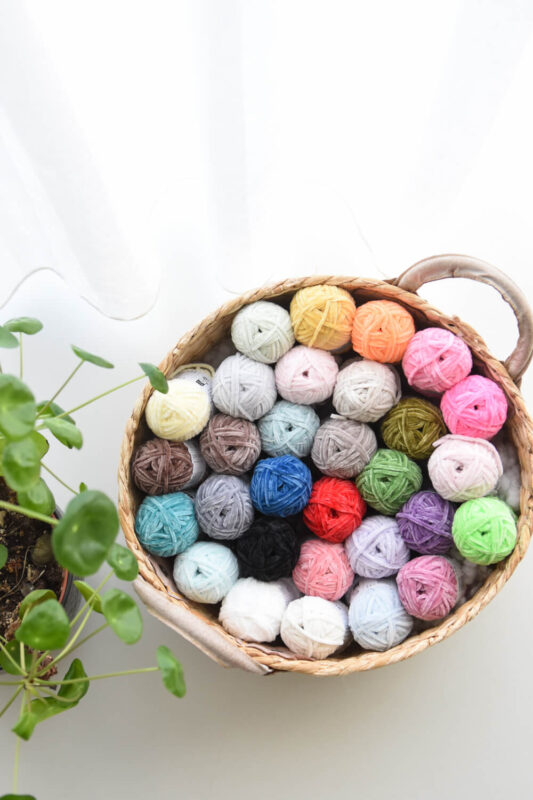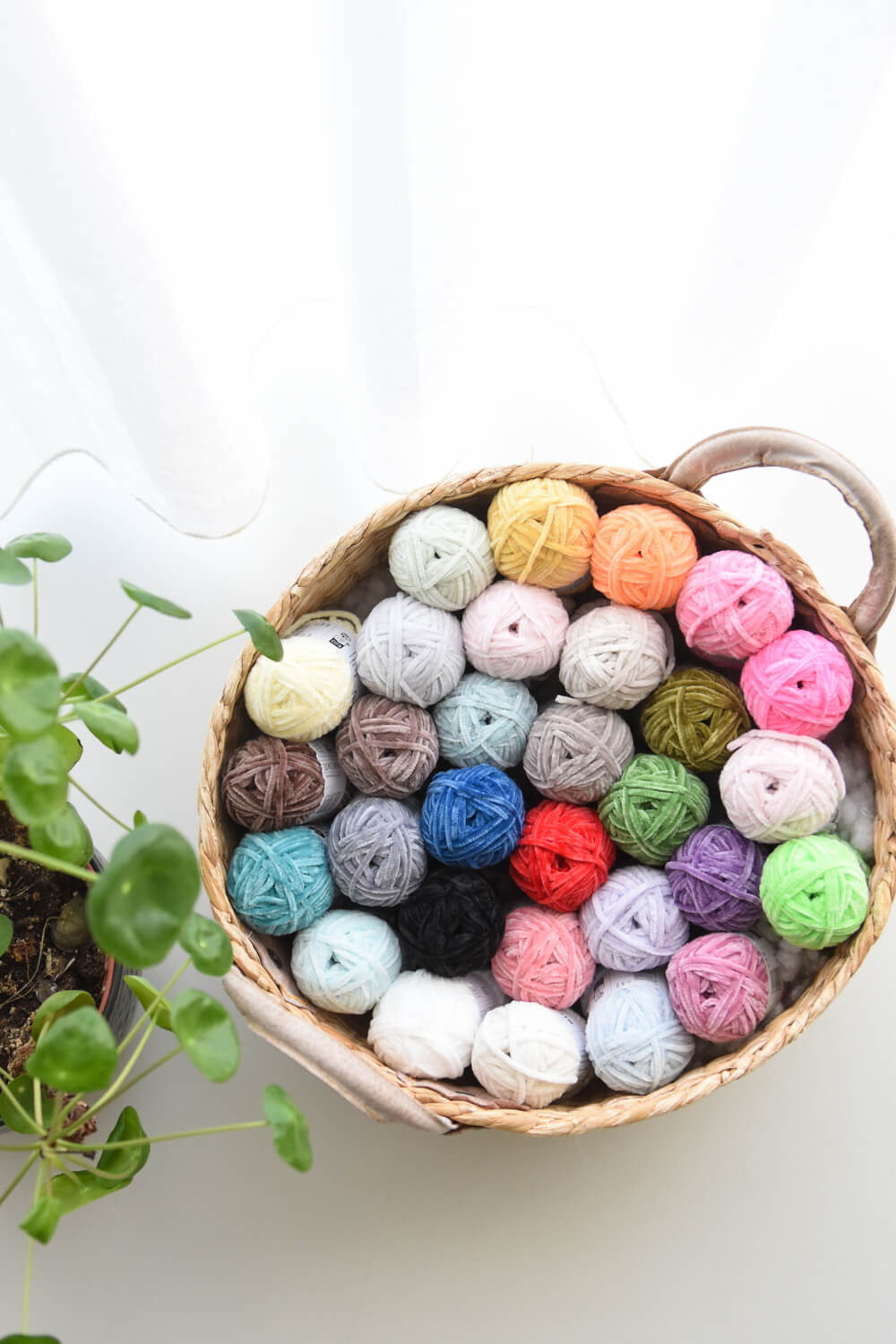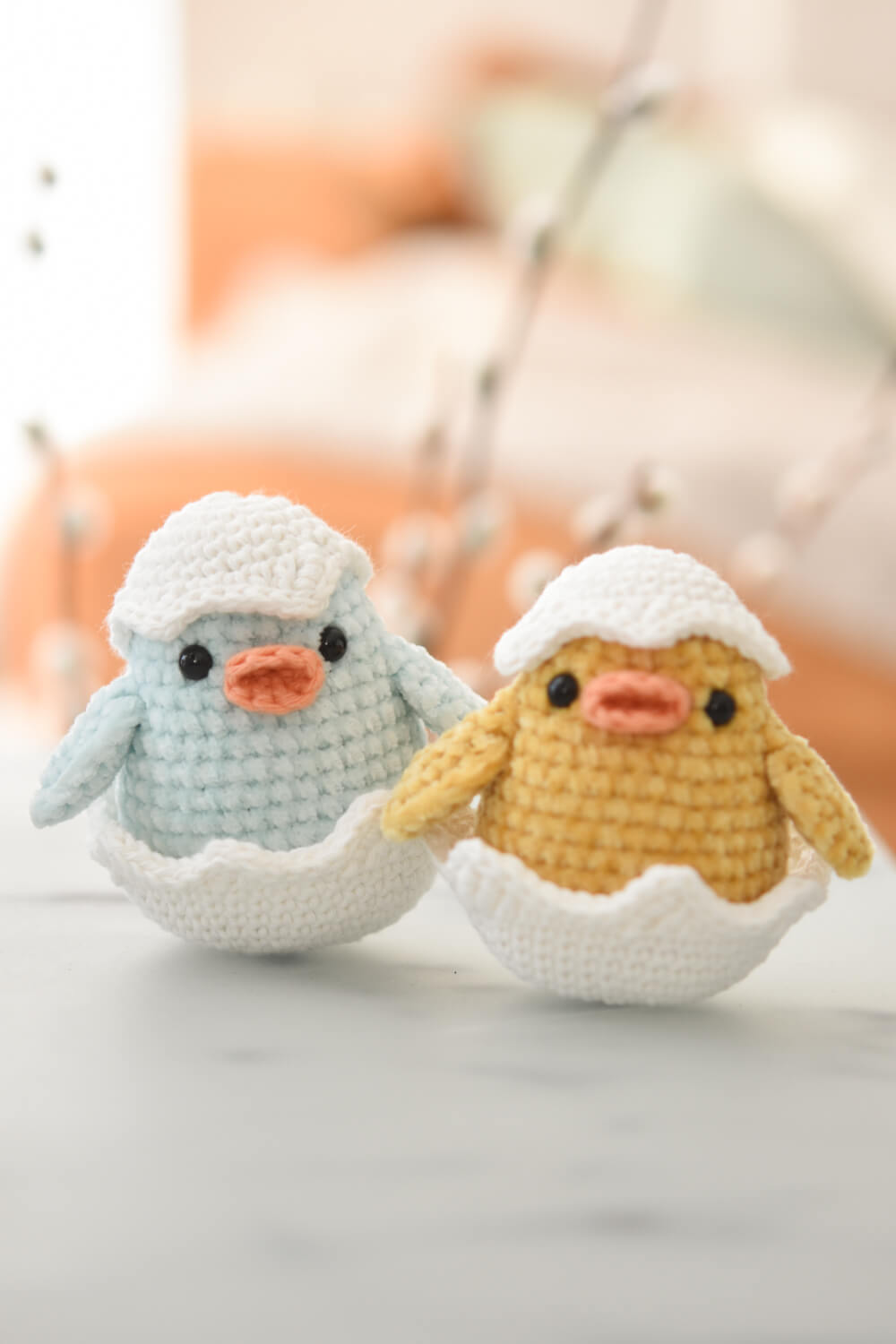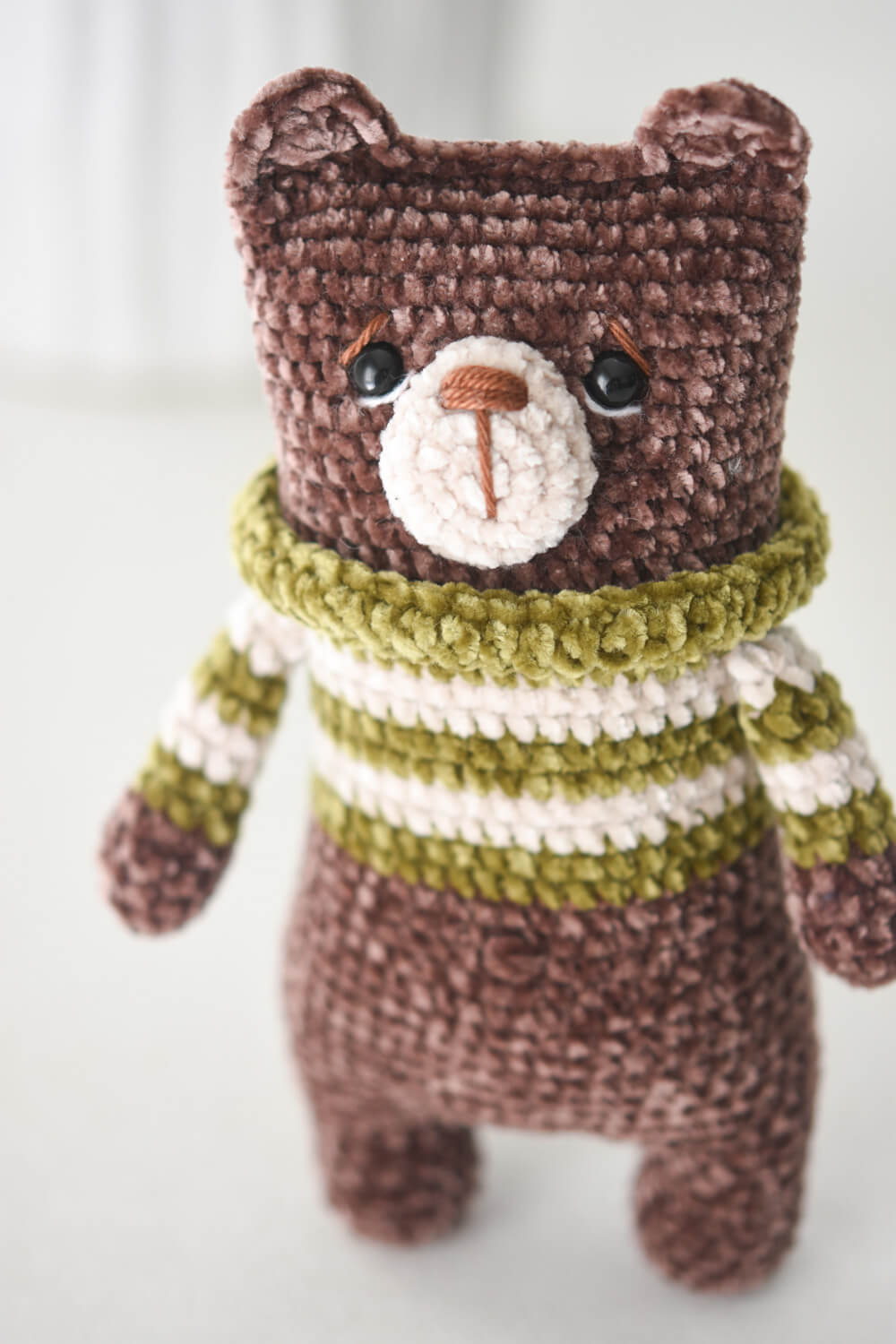Amigurumi animals, Bear, News
Chenille yarn Nilli Nilli
In my webshop you can now find a new chenille yarn Nilli Nilli by Ricorumi.
Chenille yarn has recently gained significant popularity among crocheters and toy makers, prompting many yarn manufacturers to release their own versions of this soft and versatile yarn.
What is chenille yarn like?
Chenille yarn is beloved primarily for its velvety softness and fur-like texture. Did you know that the word chenille comes from French and means caterpillar? This likely refers to the fuzzy texture characteristic of a caterpillar, which is mimicked by the yarn through a special manufacturing process.
Chenille yarn is suitable for making all soft and fluffy items – blankets, throws, pillows and of course soft toys. With chenille yarn, you can achieve the same softness as so-called store toys. But there is also a catch hidden here. Just as store toys are mostly made of synthetic plush fabric, chenille yarns are also mostly synthetic.
Some downsides of chenille yarn
- Many crafters enjoy working with chenille yarn because its silky texture is nice and enjoyable in the hands. However, I have to point out that, thanks to the synthetic composition, this yarn can make your hands sweat. This is especially so if you are used to working with natural materials.
- It must be taken into account that chenille yarn is not suitable for a beginner crocheter, especially when making amigurumi. Due to its furry texture, it is very difficult to count stitches. Even for an experienced crocheter, unraveling the work can cause a headache.
My experience with Ricorumi Nilli Nilli
So far I have crocheted two toys with Nilli Nilli yarn and here is my experience.
- I learned from the very first project that it is important to maintain sufficient strength when crocheting. The soft texture of the yarn tends to “sleep” the hands. It feels so good and soft when crocheting that the hand also tends to become “soft”. That’s how my first amigurumi chick stretched out and fell hopelessly flat when I added the stuffing.
- There was one technical issue that bothered me about Nilli Nilli, which stems from the way the yarn is made. A thin but strong fiber runs in the middle of the yarn, around which a fluffy and soft part of the yarn is wrapped. When crocheting, the soft part tends to collect in one place from time to time, so that the thin fiber sticks out in the middle. This can cause so-called slings, which prevent you from crocheting the next stitch or pulling the yarn through the loop. This seems to be a Nilli Nilli issue specifically, as my previous chenille yarn experience with Alize Velluto (a much thicker yarn) doesn’t bear this out.
- For me, a very big bonus of Nilli Nilli is that it is perfectly compatible with Ricorumi DK yarn from the same manufacturer. This idea also gave birth to the Little Chick in an Egg Shell design. Combining cotton and chenille yarn opens up new possibilities for the use of yarn.
Chenille yarn toys
On the left is my first Nilli Nilli project – Little chick in an egg shell (amigurumi pattern here). It combines two yarns of different character – smooth cotton Ricorumi DK and hairy chenille yarn Nilli Nilli.
On the right is the Lazybones Bear (amigurumi pattern here), the tutorial for which I originally used Rowan Chenille yarn. It was a unique 100% cotton chenille yarn. Unfortunately, it has been discontinued, and that’s why I wanted to try how a bear from Nilli Nilli yarn would turn out. I used shades 024 chocolate, 020 olive and 021 ecru. I’m pretty sure that you can make a sweet bear by using soft chenille yarn for crocheting the bear and cotton yarn for crocheting the sweater.





I love the look and the feel of this yarn, but the skeins are so small! Do you find you have to use several balls to make your toys?
You can make 2 chicks out of one ball of Nilli Nilli. And, if I remember correctly, I only used one ball of each color for the bear. But you will need more for very big toys, or if it`s a monocolored toy. I find smaller balls more convenient to be honest.